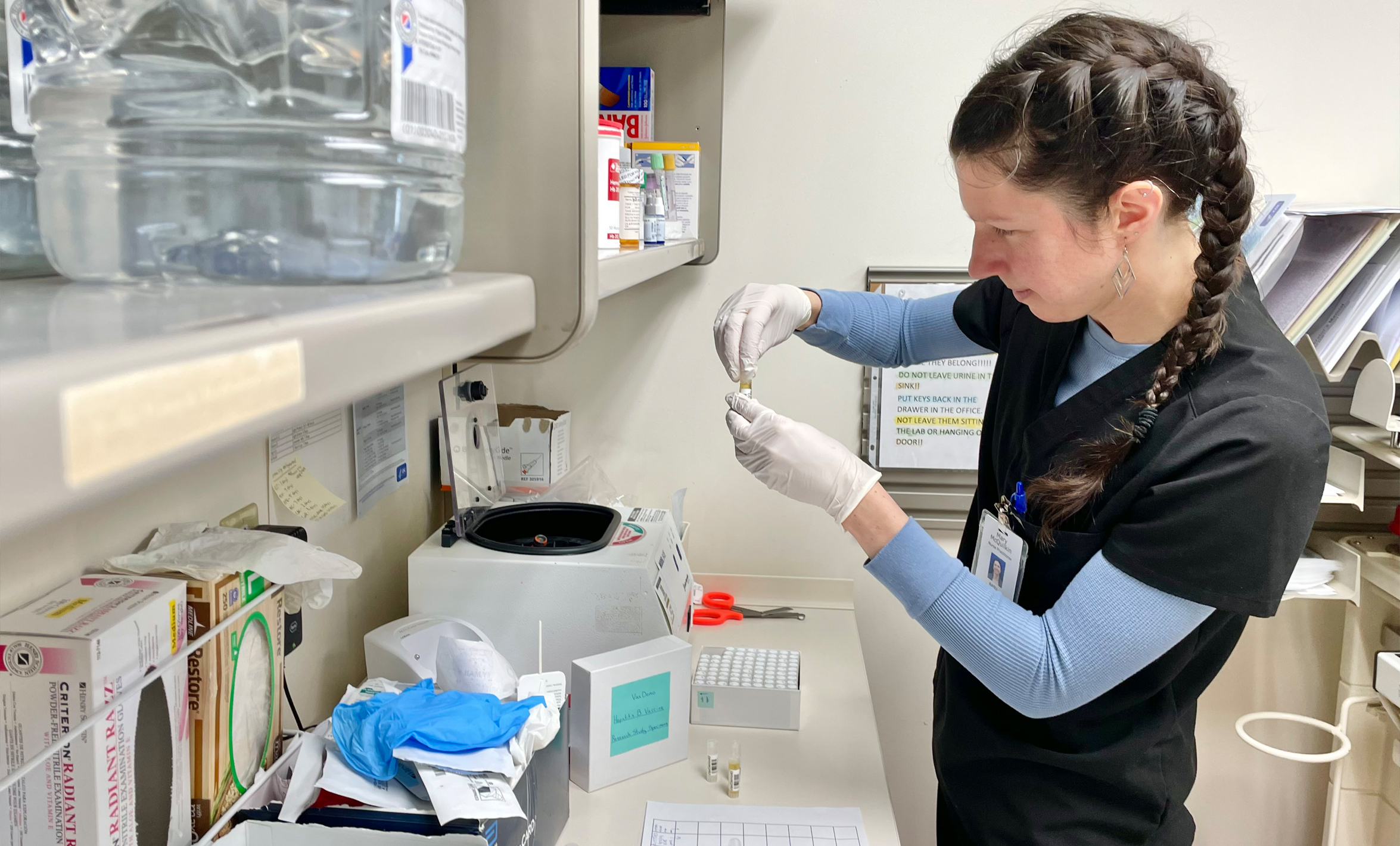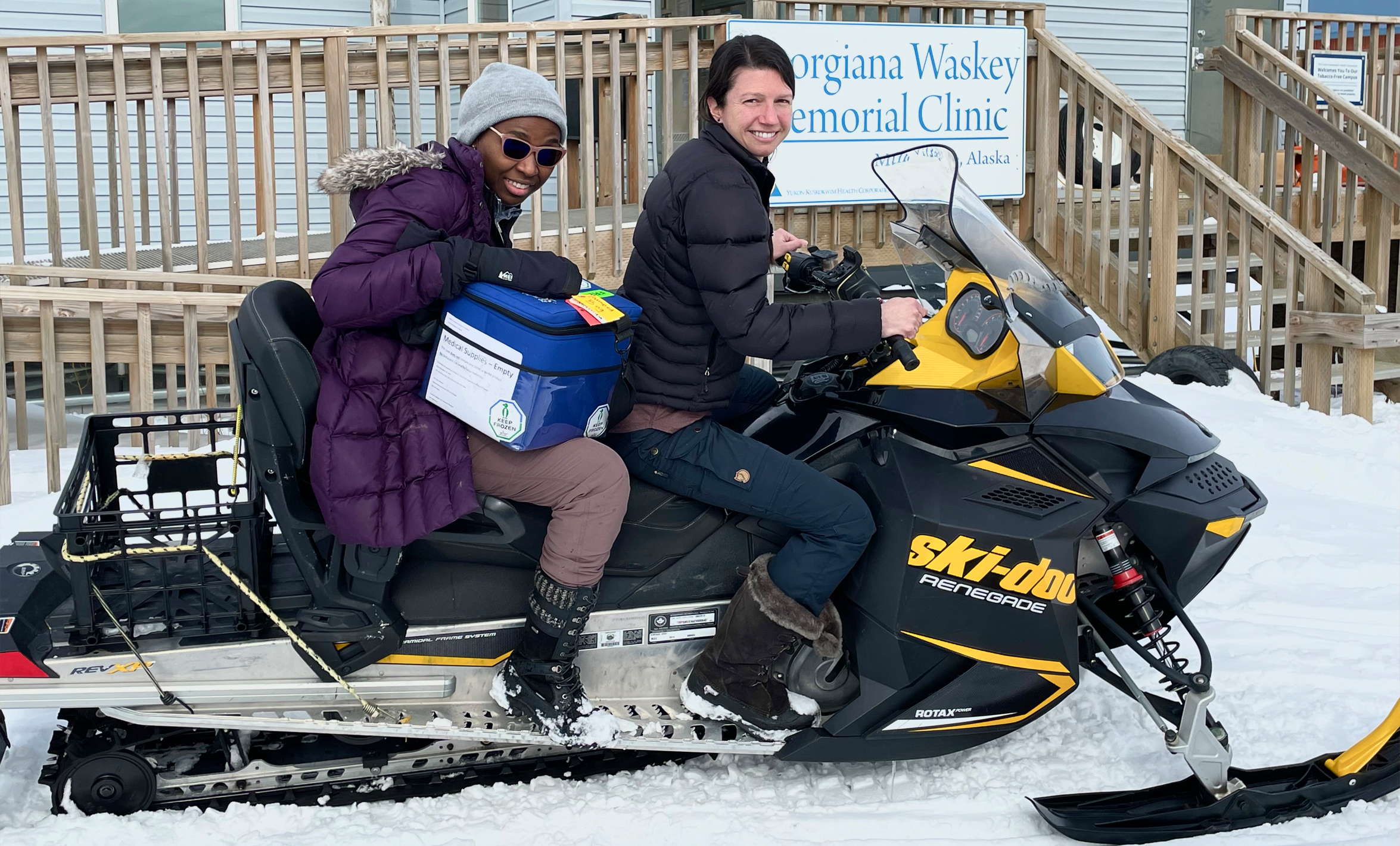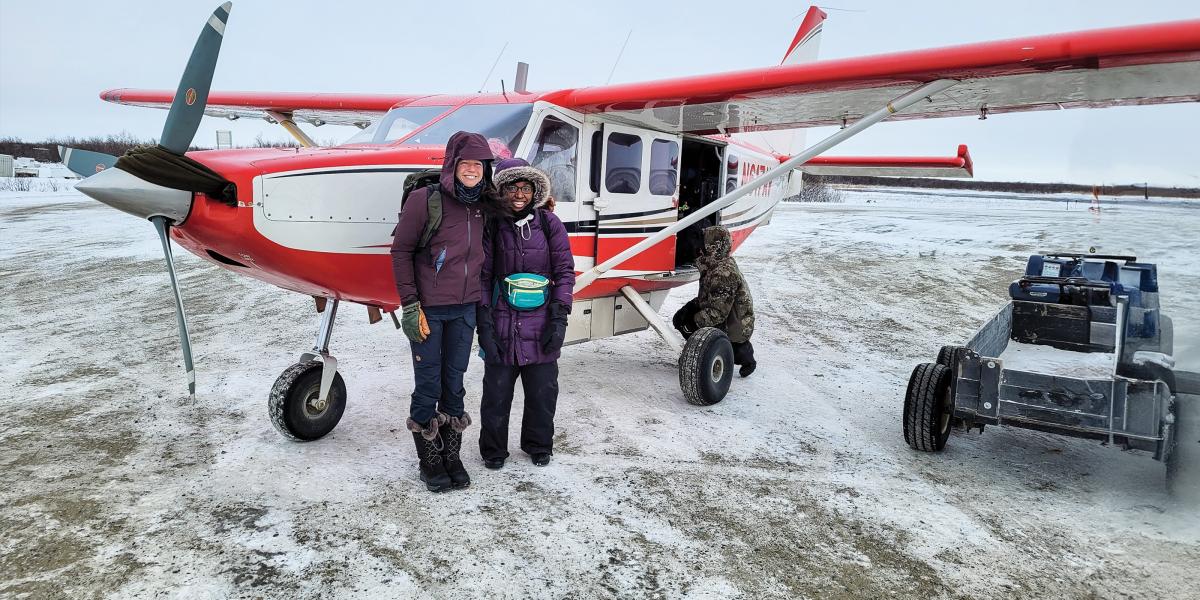A Four-Decade Follow-up on Hepatitis B Immunity
CDC epidemiologists revisited Alaskan villages to see if people who received hepatitis B vaccines in 1981 were still protected against the virus.
I turned to Bionca and said, “This is more moose than I’ve ever seen in one place.” “What?” she replied. Then, shouting over the engine of the four-seater bush plane I yelled, “SO! MANY! MOOSE!” A local man told us the moose were grouping up near the edge of town to avoid a pack of wolves out on the frozen tundra. The group of 40 or so looked like dairy cows lazily napping in the snow or munching on small clumps of brush rising from the ice.
It was January 2023 in Alaska, and my colleague Bionca Davis and I were flying to clinics in the villages of Kwethluk, Akiachak, and Kotlik for the 40-year follow-up study of the hepatitis B vaccine. These were three of 11 villages I traveled to that winter in western Alaska. Our goal was to draw blood from people who received the immunization series in 1981, then return the samples to our laboratory for testing to determine whether people were still protected against the virus 40 years later.

In the 1970s, Alaska had the highest rate of hepatitis B virus infections in the country. Hepatitis B virus can spread from mother to child. It also can spread through infected blood and body fluids during close contact in households through open cuts and scratches, as the virus can survive on environmental surfaces for at least one week. Alaska Native children had the highest rate of hepatocellular carcinoma due to hepatitis B in the world. The liver infection causes an acute illness with jaundice, and can lead to cirrhosis, liver failure, or liver cancer.
The Alaska Native Tribal Health Consortium and regional tribal health organizations collaborated with the CDC to document the disparity in hepatitis B among Alaska Native communities. When the vaccine became available in 1981, Dr. Brian McMahon led a team that traveled to remote villages with high disease burden. In the years that followed, vaccination and community screening programs led to precipitous declines in hepatitis B virus infections and associated liver disease in Alaska. No cases of acute hepatitis B virus infection or HCC have been identified among Alaska Native children since 1992.
Hepatitis B vaccine is very effective, but the duration of protection is not fully known. The current study aims to determine how many people remain protected at 40 years after vaccination. This is the longest running cohort to monitor the vaccine, so the findings of this study have and will continue to guide hepatitis B immunization policy in the United States and globally.

Travel to remote villages poses many challenges, especially in the winter. More than 85% of communities in Alaska are not on the road system, so travel by small plane is required. From the rural airstrip, mode of transit to the clinic involved snow machine, four-wheeler, truck, and once getting towed in a sled with the study supplies. In addition to the risk of breakage or loss on eclectic modes of transit, extreme temperatures pose a threat to blood specimens during travel.
Normally blood for antibody titers can be transported in serum separator tubes, but cannot be frozen. At one location, Bionca and I were dropped off on an airstrip without a building or shelter in -14˚F (-20˚F with wind chill). Our ride didn’t show, and it was miles to the village, which would have been impossible to make on foot with the study supplies through the snow. The cold had quickly drained our old phone’s battery, so we asked the pilot for help calling an alternate ride to the clinic. After the plane left, we did jumping jacks and ran laps. Fortunately, the young man the pilot called arrived in under 30 minutes, but this exposure to cold was not atypical on these trips to western Alaska in the dead of winter.
After centrifuging the blood in each clinic, we aliquoted the serum into cryovials which can be frozen. They also are more compact and allow more specimens to be packed into the blue transport cooler.
It has been an honor to contribute to this important research in a small way by carrying out field work for the 40-year follow-up. I hope sharing this story will inspire others to partner with Alaska Native communities to address issues that are important to them and provide an example of how clinical skills and public health training can be brought together in public health practice.
